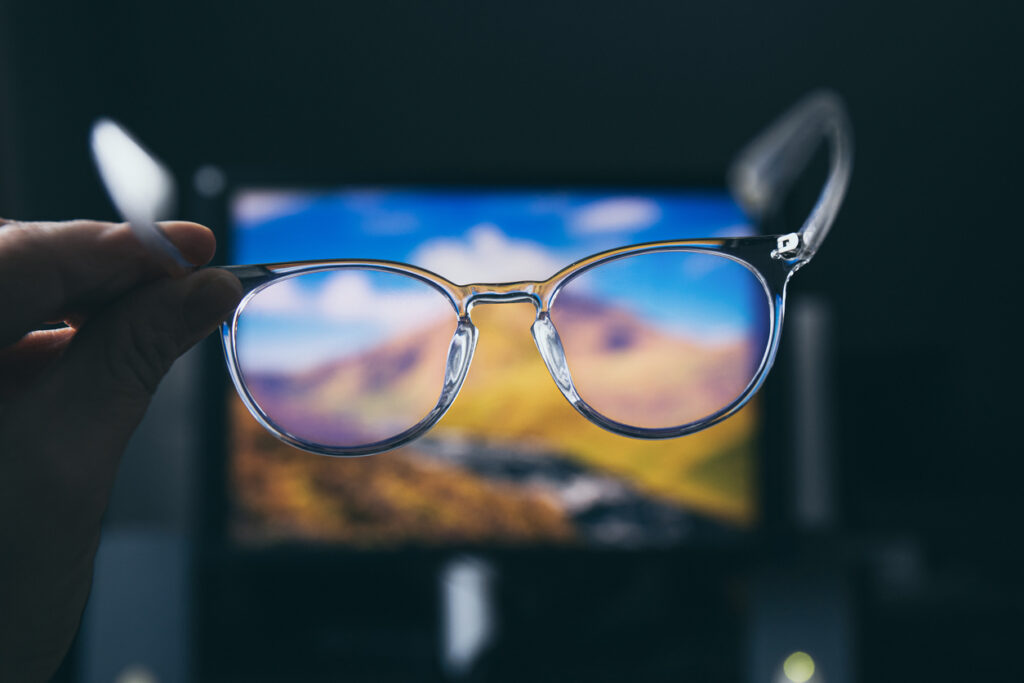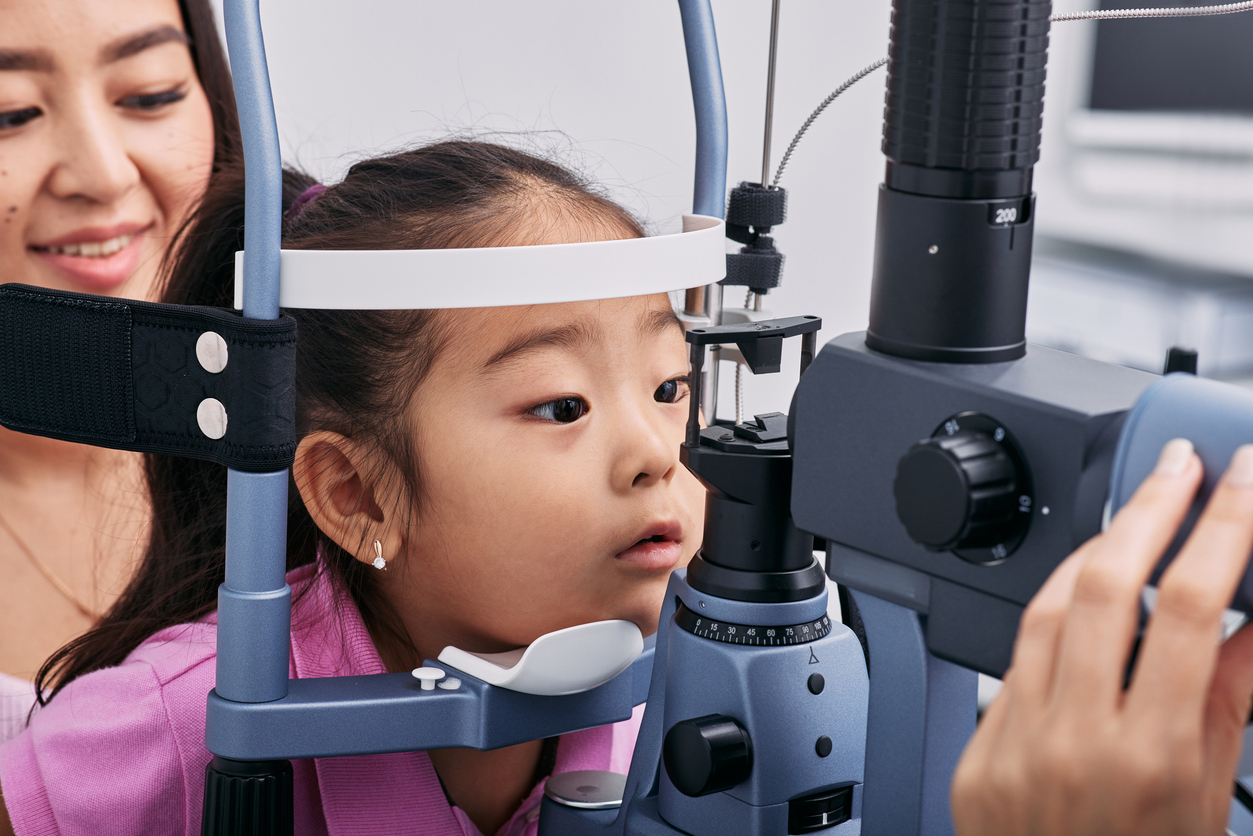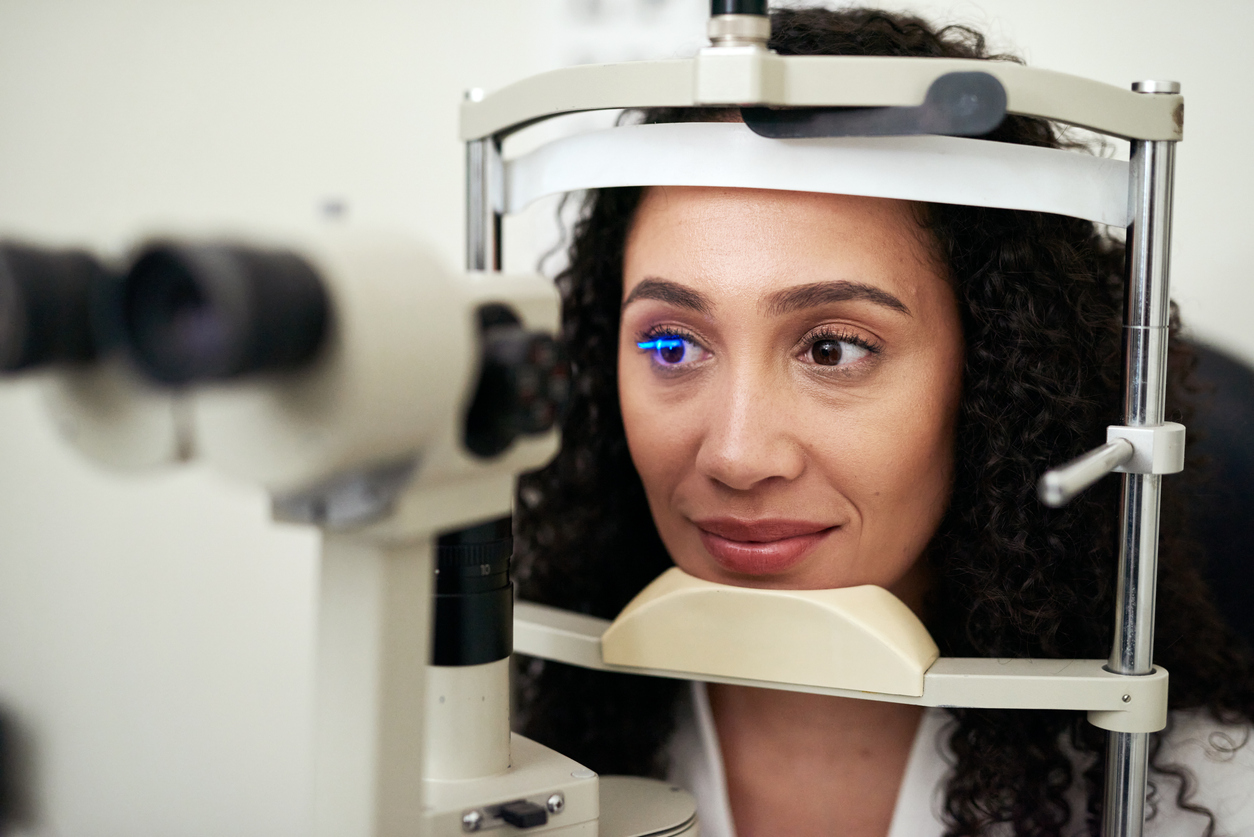You use your eyes on a daily basis for every aspect of your life. They…
How to Protect Your Eyes from Digital Strain: Practical Tips for Better Vision Health
Do you spend too much time in front of electronics? In today’s digital age, we spend a lot of time staring at screens – whether on a computer, tablet, or phone. This can lead to digital eye strain, also known as computer vision syndrome.
Before we dive in, make sure you bring up digital eye strain concerns during your regular eye exam. As you will read, digital eye strain can cause uncomfortable symptoms and potentially lead to bigger eye health issues.
Understanding Digital Eye Strain
Digital eye strain occurs when the eyes get tired from prolonged use of digital devices such as computers, tablets, and smartphones.
Symptoms include:
- Dry eyes
- Blurred vision
- Headaches,
- Neck or shoulder pain
Protecting Your Eyes from Digital Strain
 Follow the 20-20-20 Rule
Follow the 20-20-20 Rule
One of the simplest ways to reduce digital eye strain is to follow the 20-20-20 rule. This is an easy-to-remember way to protect your eyes.
- Every 20 minutes, take a 20-second break and look at something 20 feet away.
The rule gives your eyes a chance to rest so you can focus better.
Set a timer when working in front of a computer so you remember to take regular breaks. Your eyes will thank you for the free time away from the screen by performing better.
Adjust Your Screen Settings
You’d probably be surprised at how many people don’t take the time to adjust their screen settings to better suit their vision needs.
Your screen settings play a big role in eye strain.
Adjust the brightness of your screen to match the lighting around you. If your screen is brighter than your surroundings, your eyes have to work harder.
Also, increase the text size on your screen to reduce eye strain from squinting.
See Also: How to Protect Your Eyes from Computer, Phone, and TV Screens!
Maintain Proper Distance
When your eyes become tired, you may instinctively lean in closer to the screen to see better and reduce eye strain. However, this is a no-no and can actually make things worse.
Keep your screen at arm’s length, about 20 to 24 inches away from your eyes. The top of the screen should be at or slightly below eye level. This helps reduce the strain on your eyes and neck.
Blink Often
When we use digital devices, we tend to blink less often. Blinking keeps your eyes moist and helps prevent dryness and irritation.
Make a conscious effort to blink more frequently while using screens.
Use Artificial Tears
If you experience dry eyes, consider using artificial tears to keep your eyes lubricated. These can be purchased over the counter and used as needed. They help prevent dryness and irritation caused by prolonged screen use.
Optimize Your Workspace
You might be surprised to learn that your workspace can actually impact your eyes.
Your workspace setup can significantly impact your eye health. Ensure your chair and desk are at the right height to maintain good posture. Use an adjustable chair to keep your feet flat on the floor. Arrange your monitor directly in front of you to avoid turning your head or eyes.
Reduce Glare
Glare from your screen or surrounding lights can increase eye strain.
- Use an anti-glare screen protector to reduce reflections.
- Adjust your lighting to avoid glare on your screen.
- Position your screen away from windows or use curtains to control natural light.
Invest in Blue Light Glasses
Blue light from screens can disrupt your sleep and contribute to eye strain. Consider investing in blue light-blocking glasses. These glasses filter out blue light and can be worn while using digital devices. Many eyewear brands offer blue light lenses, which can be a valuable addition to your routine.
Take Regular Breaks
In addition to the 20-20-20 rule, take longer breaks throughout the day. It’s good to rest and rejuvenate so you can get away from spending too much time in front of the screen.
Stand up, stretch, and move around to give your eyes and body a rest.
Taking regular breaks helps reduce overall fatigue and discomfort.
Use Proper Lighting
You might mistakenly believe that working in a dim or dark room is better for your eyes because you can focus on the screen. However, it’s not good for your eyes.
Instead, you’ll want to ensure your workspace is well-lit to avoid straining your eyes. Use a desk lamp with adjustable brightness to provide adequate lighting. Avoid working in dimly lit rooms, as this can cause your eyes to work harder to see the screen.
Keep Your Eyes Healthy
Maintaining overall eye health is crucial for preventing digital strain. Eat a balanced diet rich in vitamins and minerals that support eye health.
Foods high in omega-3 fatty acids, vitamin C, and vitamin E are particularly beneficial. Regular eye check-ups with an optometrist can help detect and address any vision problems early on.
Adjust Screen Color Settings
Many devices have settings that reduce blue light emissions, often called “night mode” or “blue light filter.” Use these settings to reduce eye strain, especially in the evening. Warmer screen colors are easier on the eyes and can help prevent disruption to your sleep cycle.
Use Ergonomic Accessories
Consider using ergonomic accessories like a monitor stand, keyboard tray, or chair. These tools help maintain a comfortable and healthy posture, reducing the strain on your eyes, neck, and back.
Stay Hydrated
Dehydration can contribute to dry eyes and overall discomfort.
Drink plenty of water throughout the day to keep your body and eyes hydrated. Proper hydration supports overall health and well-being.
Monitor Screen Time
Be mindful of how much time you spend on digital devices. Set limits for recreational screen time and take breaks to engage in other activities. Encouraging children to follow these practices can help protect their developing eyes.
Create a Comfortable Environment
Ensure your workspace is comfortable and conducive to reducing eye strain.
Adjust the temperature and humidity to create a pleasant environment. Remember, a comfortable workspace promotes better concentration and reduces the likelihood of eye strain.
Contact Lens Users and Digital Devices
If you wear contact lenses and use digital devices for long periods, you might experience dry eyes, blurriness, and other symptoms. ‘
Here are some tips:
- Give your eyes a break by switching to glasses occasionally.
- Avoid sleeping in contact lenses, even if they’re labeled “extended wear.”
- Practice good contact lens hygiene.
- If your eyes are red, blurry, watery, sensitive to light, or painful, see an optometrist
Is Virtual Reality (VR) Bad for Your Eyes?
Using VR headsets or watching 3-D movies can strain your eyes. If you get headaches, dizziness, or eye fatigue, you might have focus or depth perception issues.
VR and AR headsets create depth by showing different images to each eye. In real life, our eyes converge on approaching objects. VR headsets require your eyes to constantly refocus, which can cause strain. If you struggle with VR, you might also have trouble with eye convergence in daily life.
Feeling the Effects of Digital Eye Strain? Schedule Your Appointment
Are your eyes feeling the strain from prolonged screen use? Schedule an eye exam with Andover Family Optometry or Winfield Family Optometry today. Our team will provide personalized solutions to keep your eyes healthy and comfortable.



